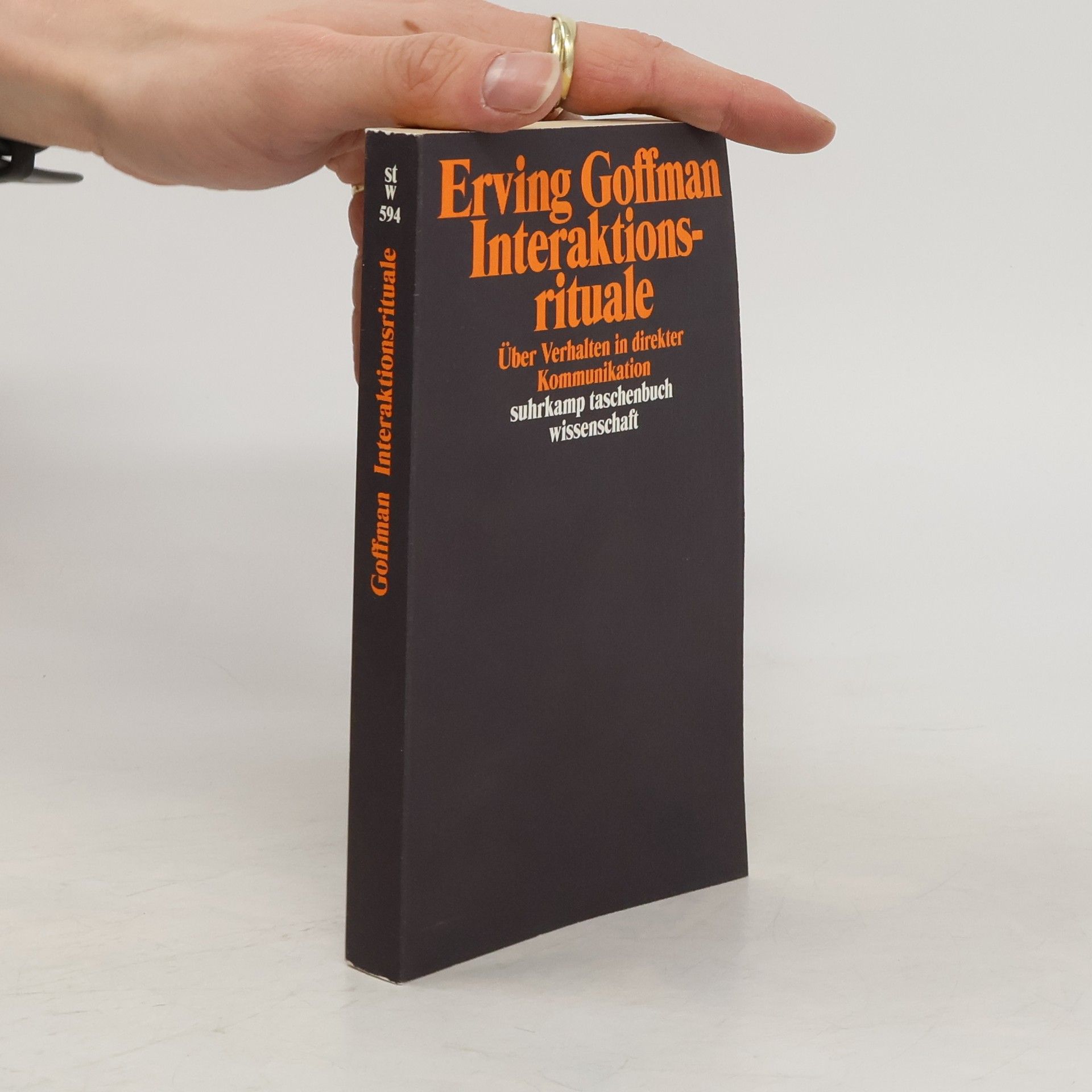Erving Goffman (1922-1982) - uznawany jest za jednego z najwybitniejszych amerykańskich socjologów, był profesorem w Chicago, Berkeley i innych, napisał kilkanaście książek, w tym m.in. Piętno, Człowiek w teatrze życia codziennego i właśnie Instytucje totalne. Twierdzi w tym dziele, że to nie nasze cechy osobowości są dysfunkcjonalne, ale na dysfunkcjonalność skazuje nas system, właśnie owe instytucje totalne, w których charakterze leży, wcale nie pomoc pacjentom, czy resocjalizacja osadzonych, ale własne, totalne, egoistyczne, instytucjonalnie zorganizowane interesy samych instytucji. Jak pisze Goffman Organizacje odgrodzone mają cechę, którą dzieli z nimi niewiele innych bytów społecznych: do obowiązków jednostki należy tu widoczne zaangażowanie w działalność organizacji o określonej porze, co oznacza koncentrację uwagi i wysiłek mięśni, skupienie na wykonywanej właśnie czynności. To obowiązkowe bycie pochłoniętym działaniem organizacji jest zwykle uznawane za symbol zarówno zaangażowania jednostki, jak i jej przywiązania oraz tego, że akceptuje sposób, w jaki jej uczestnictwo w organizacji wpływa na definiowanie przez nią własnej natury. A zatem każde badanie sposobu, w jaki jednostki przystosowują się do bycia identyfikowanymi i definiowanymi, musi skupić się na tym, jak one sobie radzą z demonstrowaniem tego, że działania organizacji je absorbują.... A to dopiero początek jego rozważań często ujawniający patologie tego typu instytucji...
Erving Goffman Book order
Erving Goffman was a Canadian sociologist and writer renowned for his profound analysis of social interaction through a dramaturgical lens. His work delved into symbolic interaction, social order, and impression management, drawing inspiration from thinkers like Durkheim, Freud, and Mead. Goffman's theories remain highly influential today, offering critical insights into the relationship between individual behavior and the reproduction of social systems, solidifying his status as a major 20th-century sociological thinker.







- 2023
- 2023
Selbst und Interaktion - Situation und Gesellschaft
Ausgewählte Schriften I
Erving Goffman ist einer der einflussreichsten Soziologen des 20. Jahrhunderts. Seine Konzepte haben weit über die Grenzen der Soziologie hinaus in den Kanon verschiedener Disziplinen Eingang gefunden. Teils als mangelhaft beklagte Übersetzungen sowie die fehlende Rezeption unbekannterer Texte verstellen jedoch die Einsicht in das umfassende Potenzial seines Gesamtwerks. Die von René Salomon und Andreas Göbel zusammengestellten Schriften enthalten Erst- und Neuübersetzungen von Brigitte Luchesi, welche die gesamte Werkbiografie umfassen. Eine wissenschaftliche Kommentierung der Texte macht werkübergreifende Zusammenhänge und spezifische Übersetzungsentscheidungen sichtbar. Dies ermöglicht eine neue Kontextualisierung der Goffman'schen Theorien und gibt Einblick in Kontinuitäten und Diskontinuitäten seines Denkens.
- 2022
Asylums presents four interlinked essays that explore life in the 'total institutions': the closed systems of prisons, boarding schools, nursing homes and, most importantly, mental institutions. Focusing on the relationship between an inmate and the institution that contains them, Goffman unpicks how lives are managed 'on the inside', and how the setting more often than not works against the inmate's best interests. A radical exploration of the institutions that rule over the lives of men, women and children, Asylums is one of Erving Goffman's most insightful and long-lived works.
- 1994
AuszugIn diesem Buch werden zwei wichtige Texte dieses bedeutenden Soziologen erstmals in deutscher Übersetzung zugänglich gemacht. »Die Interaktionsordnung« ist der letzte von ihm selbst veröf- fentlichte Text, in dem er seine Theorie der Interaktion prägnant zusammenfaßt. Im zweiten Text »Das Arrangement der Geschlechter« leuchtet Goffman seine Entdeckung der Eigengesetzlichkeit zwischenmenschlicher Interaktion in ihrer Bedeutung für das Verhältnis der Geschlechter aus.
- 1981
This book brings together five of Goffman's seminal essays: Replies and Responses, Response Cries, Footing, The Lecture, and Radio Talk.
- 1979
- 1975
Goffmans Studien über Verhalten in direkter Kommunikation sind in erster Linie ethnographische Untersuchungen mit dem Ziel, die syntaktischen Beziehungen zwischen den Verhaltensäußerungen verschiedener, in einer sozialen Situation gleichzeitig anwesender Personen aufzudecken. Untersuchungsgegenstand sind also jene Ereignisse, die im Verlauf und aufgrund des Zusammenkommens von Menschen geschehen.
- 1974
Erving Goffman will influence the thinking and perceptions of generations to come. In Frame Analysis, the brilliant theorist writes about the ways in which people determine their answers to the questions "What is going on here?" and "Under what circumstances do we think things are real?"
- 1974
Erving Goffman untersucht in diesem Buch die allgemeinen Merkmale und Strukturen alltäglicher Interaktionspraktiken.







